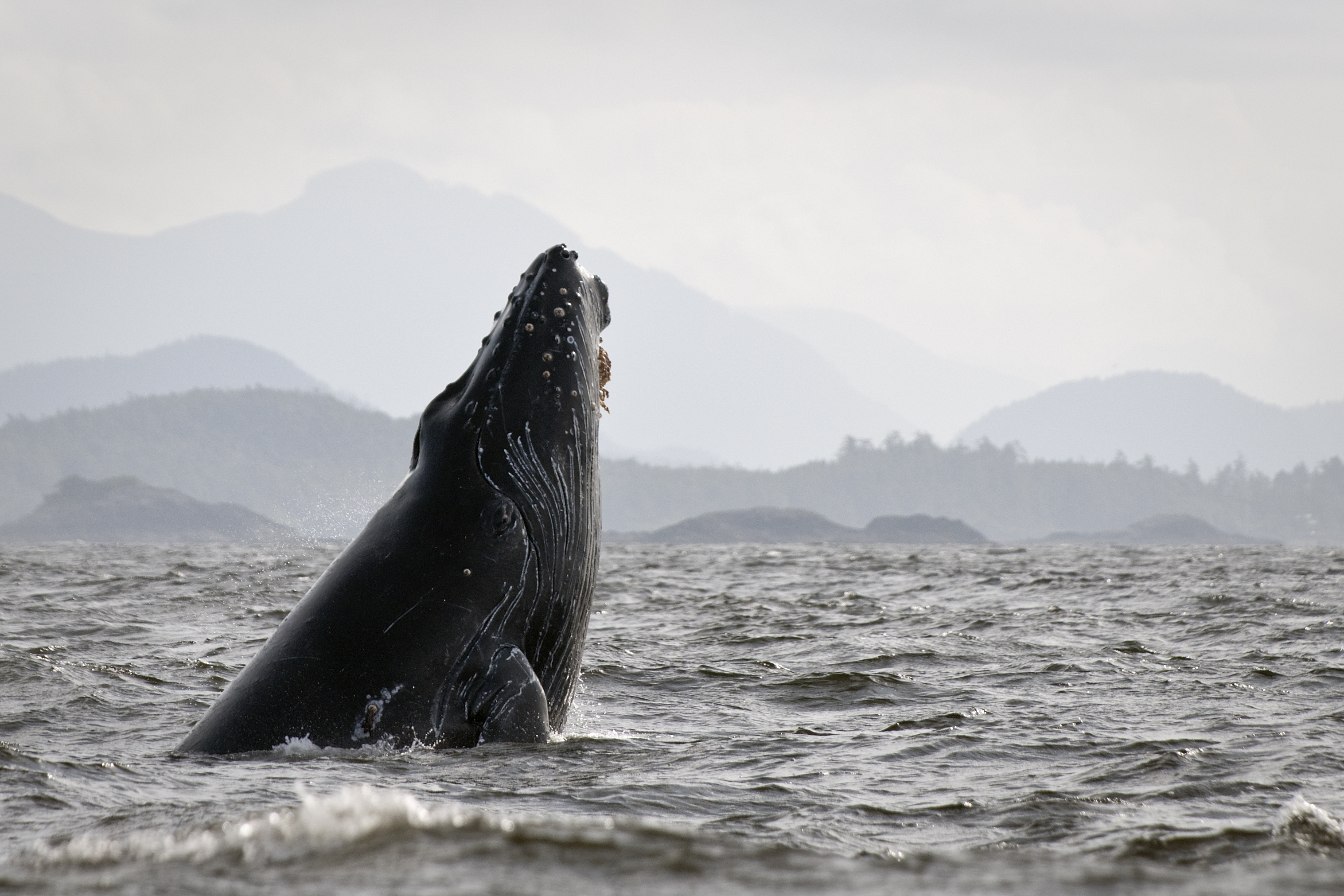
[geoip-content country=”CA”]
It’s WWF Water Wednesday, when Love Nature television explores the unique characteristics, natural history, environmental challenges and threats facing waters and aquatic species in Canada and around the world. Tonight at 8 p.m. ET/PT watch Sperm Whales: Titans of the Deep and read on for five incredible facts about whales you’ll find in Canada.
[/geoip-content]
With more than 30 species of whales roaming the waters along Canada’s 200,000 kilometre coastline, it’s no surprise the country is considered prime whale-watching territory. And if you’re lucky enough to see one in the flesh, these five astonishing facts will make them even more awe-inspiring.
Unicorns are real, and they live in the Arctic

The narwhal, also known as the “unicorn of the sea,” was given its fairytale nickname for its most distinctive feature — the long ivory tusk that spirals out from the top of its head. The sheer size of the tusk, which can sometimes reach up to three metres long, isn’t the only reason it’s so incredible. Hundreds of years ago, people believed the tusks held special magical properties, and as it turns out, they weren’t completely wrong. Recent research has shown that the tusk contains millions of nerve endings, and it’s thought to play an important role in the whale’s ability to find food.
Underwater noise is causing chaos for whales of the Pacific North Coast
The world is becoming a noisier place — on land and in the water — and for some mammals, it’s more than just a nuisance. Canada’s Pacific Coast is home to some magnificent marine mammals, including orcas, humpbacks, and the elusive fin whale. But an increasing amount of boat traffic, navy sonar and construction could change that. Sounds are incredibly important to the whales, which use sound to navigate, avoid predators, forage for food and find mates. Because sound is so critical to a whale’s survival, researchers are concerned that continuous noise could have significant effects on populations. WWF-Canada is partnering with scientists to map and better understand the impact of noise pollution along the Pacific Coast. We’re also working with the government and industries to reduce noise levels in critical whale habitats by promoting greener technologies, improving management activities, and even exploring opportunities to establish “quiet areas” for marine species.
Belugas are brimming with toxic waste

“You are what you eat” isn’t just a turn of phrase when it comes to some belugas. These unmistakable all-white whales generally reside in areas with Arctic sea ice, but there are a few small populations that live farther south. These relics of the Ice Age are mostly found in the St. Lawrence Estuary, and often encounter human activities such as dredging, commercial shipping, recreational boating and construction. In turn, they’re exposed to a significant number of contaminants, including PCBs, DDT, mercury and lead. The concentration of these contaminants in belugas recovered along the shores of the St. Lawrence has been so high in the past, that the whale carcasses were classified as toxic waste. It’s an especially troubling fact when you consider that these whales are near the top of the marine food chain, and can act as an indicator of the ecosystem’s overall health.
Poop-sniffing dogs are helping right the wrongs done to right whales
The North Atlantic right whales’ slower pace and proximity to land made them an easy target for hunters in the whaling era, and although a lot has changed since then, human activity remains their biggest threat. These long-distance travellers often swim through fishing and shipping sites during their annual migration, and as a result, more than 70 per cent of these whales are scarred from being tangled in fishing gear. WWF-Canada has worked with lobster fishers along Nova Scotia’s southern coast to adopt practices that reduce entanglement, like using minimal amounts of rope and ensuring all lines are set as low and tight as possible. But some scientists are approaching the problem very differently. They’ve been collecting samples of whale poop to assess the mammals’ stress levels, health and reproductive hormones, and they’ve enlisted dogs to help. After all, who’s going to be better at sniffing out whale dung than a friendly rottweiler named Fargo? He was one member of the at-sea dog teams that have been trained to find the feces of specific whale species, and the North American right whale is his specialty.
A very special whale population lives in The Gully

The Gully is an underwater canyon that lies at the edge of North America’s Eastern continental shelf, nearly 200 kilometres off the coast of Nova Scotia. With steep sides plunging more than two kilometres into the ocean, it’s teeming with marine life. But it’s best known as the home of an endangered population of northern bottlenose whales. Native to the North Atlantic Ocean, these beaked whales are generally found in subarctic waters such as the Davis Strait, the Labrador Sea, and the Greenland Sea. But 160 of the deep-diving creatures live in The Gully year-round, which is one reason WWF-Canada worked for more than 20 years to protect the region from fishing and oil and gas development. Thanks in part to the organization’s efforts, The Gully became Atlantic Canada’s first marine protected area (MPA) in 2004.
